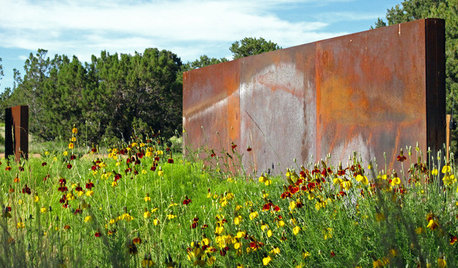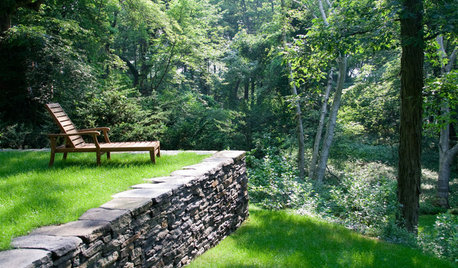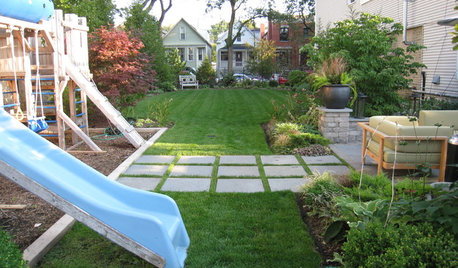Trouble with my Lawn
saltywalty
17 years ago
Related Stories

LANDSCAPE DESIGN15 Great Ideas for a Lawn-Free Yard
End the turf war for good with hardscaping, native grasses and ground covers that save water and are easier to maintain
Full Story
EARTH DAYThe Case for Losing the Traditional Lawn
Work less, help the environment and foster connections by just saying no to typical turf
Full Story
GREAT HOME PROJECTSHow to Replace Your Lawn With a Garden
New project for a new year: Lose the turfgrass for energy savings, wildlife friendliness and lower maintenance
Full Story
LANDSCAPE DESIGNCalifornia Says Goodbye to the Sprawling Ornamental Lawn
New state rules will effectively limit turfgrass to 25 percent of the landscape in most new and renovated yards
Full Story
MOST POPULARMeet a Lawn Alternative That Works Wonders
Carex can replace turfgrass in any spot, is low maintenance and adjusts easily. Add its good looks and you’ve got a ground cover winner
Full Story
LIFEYou Said It: ‘Work With the Space You Are Given’ and More
Having trouble keeping that resolution momentum going? Help is here
Full Story
GARDENING GUIDESGreat Design Plant: Ratibida Columnifera
A shortgrass prairie native wildflower fit for pollinators and dry trouble spots offers benefits all year long
Full Story
LANDSCAPE DESIGNWhat the Heck Is a Ha-Ha, and How Can It Help Your Garden?
Take cues from a historical garden feature to create security and borders without compromising a view
Full Story
LIFE6 Tips for Teaching Your Kids to Be Good Neighbors
Everyone wins when your children learn to respect boundaries, get help when they need it and show others they care
Full Story
GROUND COVERSGround Force: 10 Top Ground Covers for Your Garden
Protect your soil from weeds and drought this summer with a living mulch of ground covers
Full Story





bpgreen
songbirdmommy
Related Professionals
West Milford Landscape Architects & Landscape Designers · Ashburn Landscape Architects & Landscape Designers · Panama City Landscape Architects & Landscape Designers · Goodyear Landscape Contractors · Cedar Hill Landscape Contractors · Essex Landscape Contractors · Lyndhurst Landscape Contractors · New Berlin Landscape Contractors · Salmon Creek Landscape Contractors · San Carlos Park Landscape Contractors · Hueytown Landscape Contractors · Boston Siding & Exteriors · Paramus Siding & Exteriors · Southampton Siding & Exteriors · Thornton Siding & Exteriorsstevation
saltywaltyOriginal Author
bpgreen
stevation
jimh6278
hjust1
bpgreen
saltywaltyOriginal Author
bpgreen
grvtykllr
soulflower
gware
bpgreen
stevation
cynthian